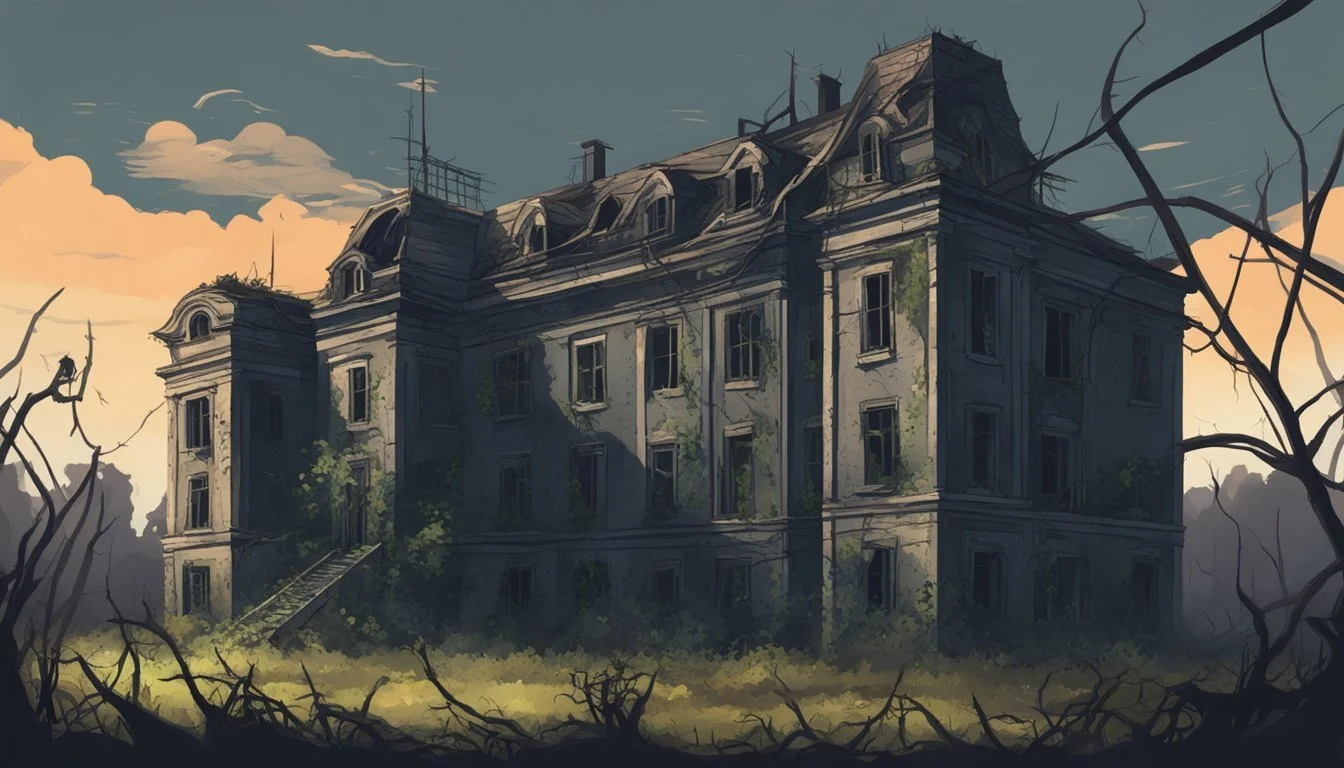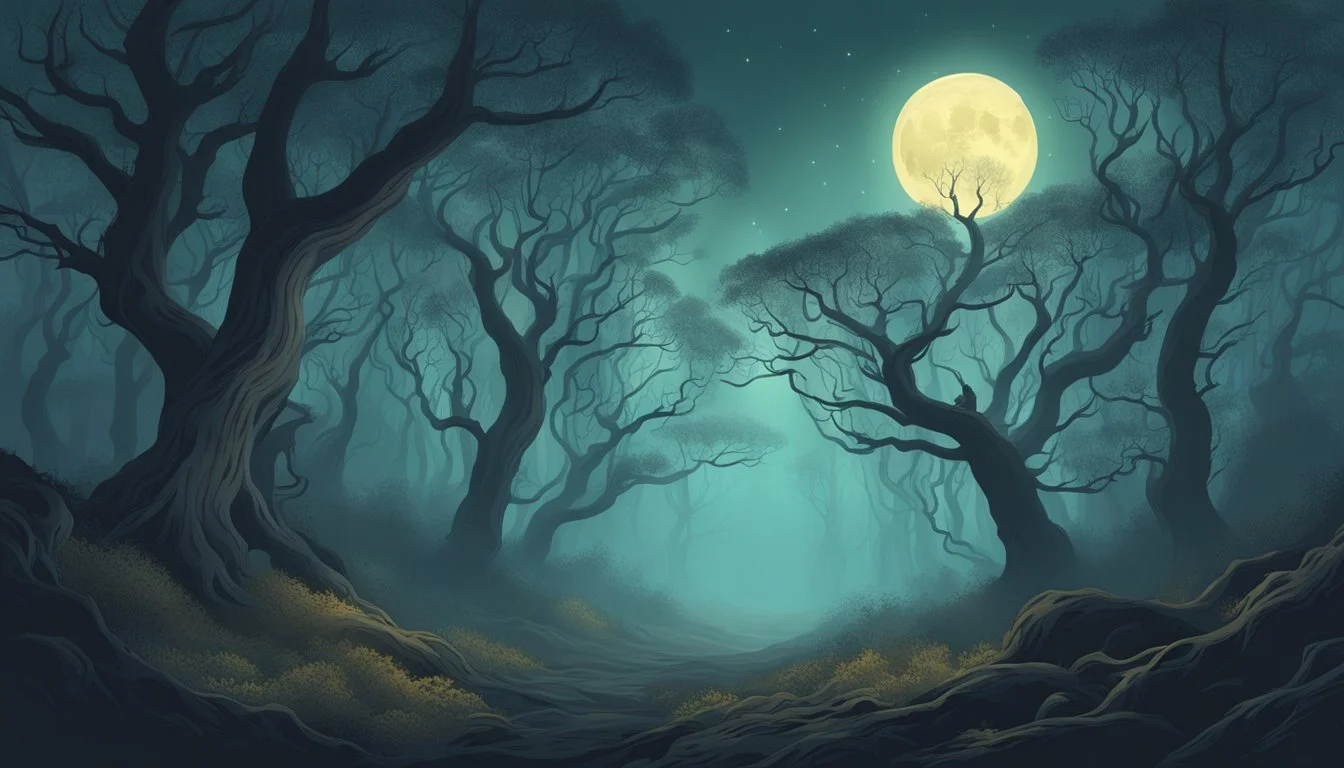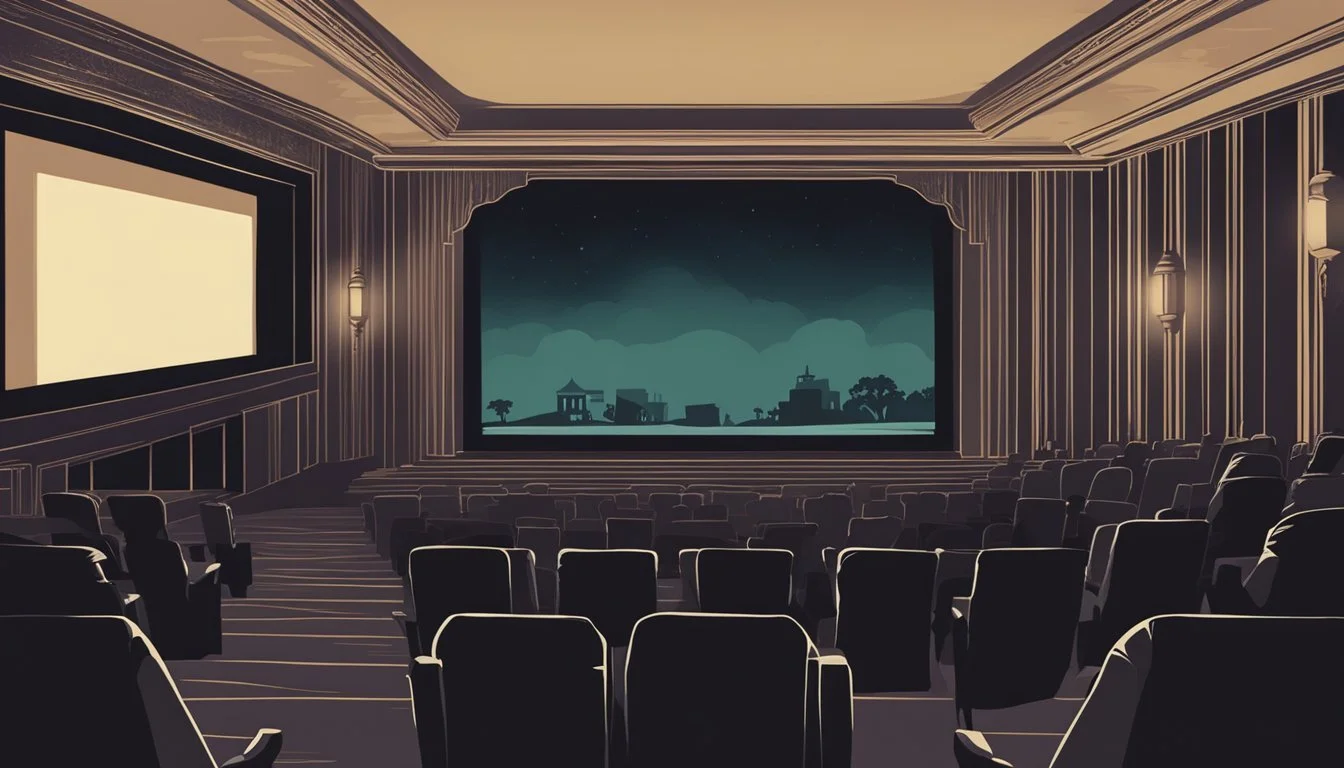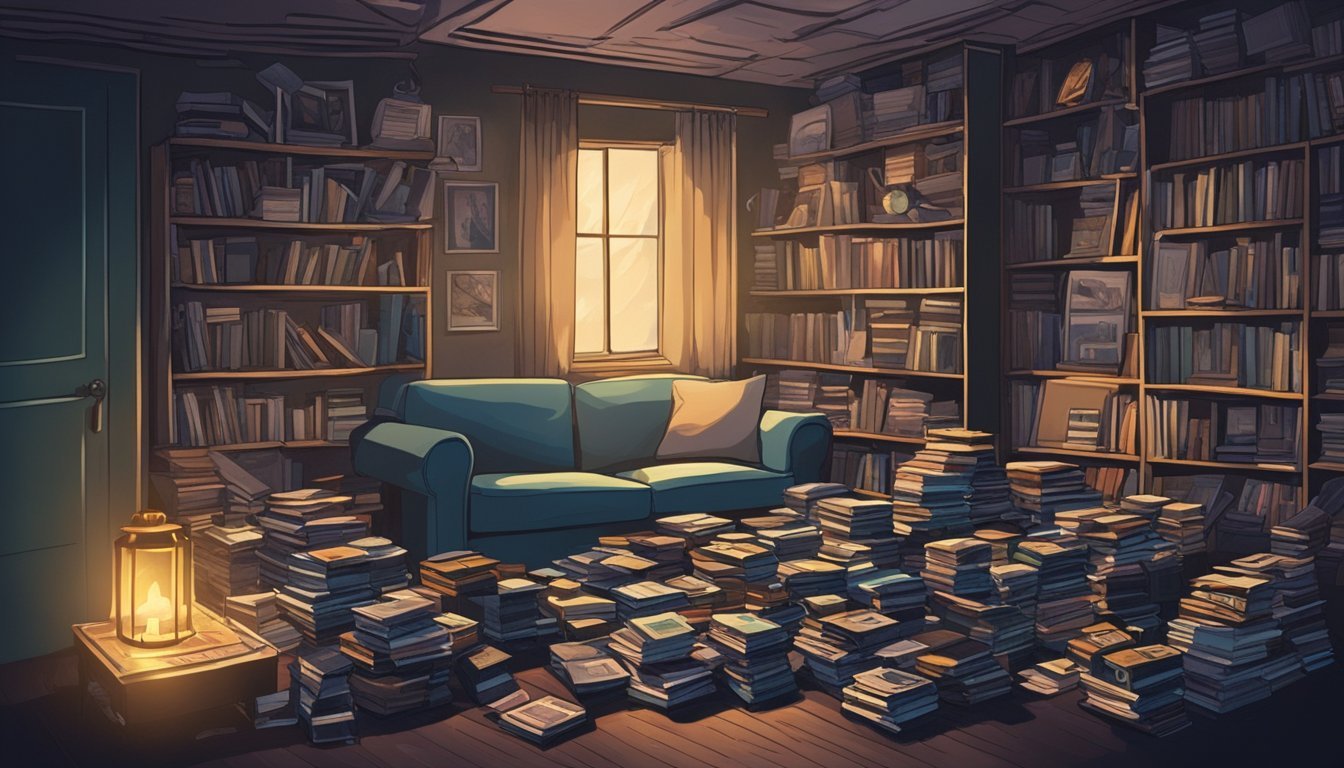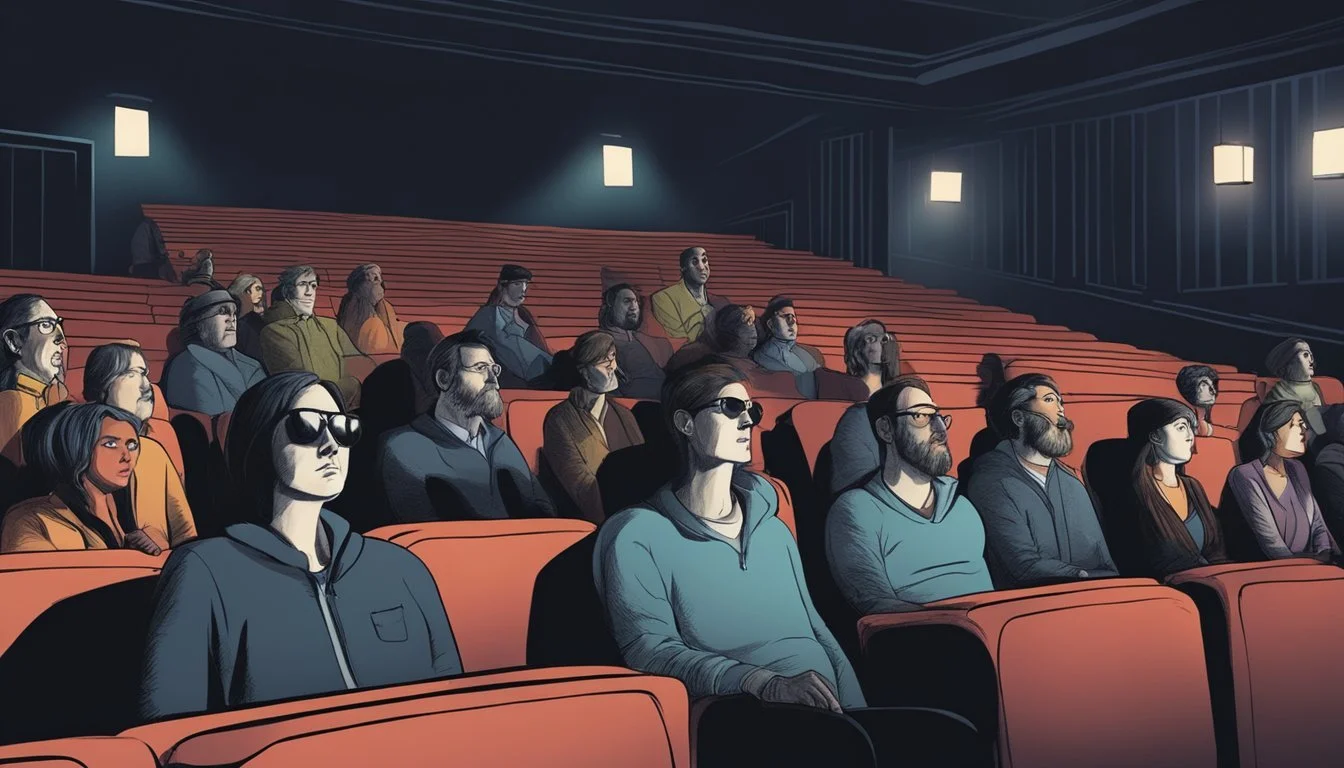Real-Life Nightmares: When Horror Leaps Off the Screen and Into Your Living Room
Documentary horror movies blend the factual approach of documentaries with the chilling suspense of horror films. These unique productions explore real-life paranormal experiences, true crime cases, and the making of iconic horror classics. They offer viewers a chance to delve deeper into the world of horror, examining its history, cultural impact, and behind-the-scenes processes.
Some of the most compelling documentary horror films bring to life unexplained paranormal events, offering firsthand accounts from those who lived through them. For example, "The Enfield Poltergeist" recounts a famous haunting case from the 1970s, presenting interviews and evidence that continue to intrigue and unsettle audiences today. Other documentaries focus on the creation of beloved horror franchises, such as "Never Sleep Again," which provides an in-depth look at the "Nightmare on Elm Street" series and its iconic villain, Freddy Krueger.
These films serve multiple purposes, educating viewers about the horror genre while also delivering genuine scares. They can be just as unsettling as fictional horror movies, if not more so, due to their basis in reality. For horror enthusiasts and casual viewers alike, documentary horror movies offer a unique and often disturbing glimpse into the darker aspects of human experience and imagination.
The Evolution of Documentary Horror Movies
Documentary horror films merge factual storytelling with terrifying elements, creating a unique subgenre. These movies explore real-life horrors and the making of fictional scares.
Rise of the Genre
Documentary horror emerged as filmmakers sought to examine the cultural impact of scary movies. Early examples focused on the history and production of classic horror films. These documentaries provided behind-the-scenes looks at iconic monsters and special effects.
As the genre evolved, it began to cover broader topics within horror. Filmmakers explored urban legends, paranormal investigations, and true crime stories. This shift allowed for a deeper examination of society's fears and fascinations.
Influential Horror Documentaries
"The American Nightmare" (2000) analyzed how horror films reflected societal anxieties of the 1960s and 1970s. It featured interviews with directors like John Carpenter and George A. Romero.
"Never Sleep Again: The Elm Street Legacy" (2010) delved into the "Nightmare on Elm Street" franchise. This comprehensive documentary explored the series' impact on pop culture.
"Horror Noire" (2019) examined the role of Black Americans in horror cinema. It highlighted both representation in front of the camera and contributions behind the scenes.
These influential works showcased the genre's ability to critique and celebrate horror films simultaneously. They offer valuable insights into the crafting of scares and the enduring appeal of frightening stories.
Key Horror Franchises and Documentaries
Horror franchises have captivated audiences for decades. Several documentaries provide in-depth looks at the creation and impact of these iconic series.
A Nightmare on Elm Street Series
Freddy Krueger terrorized teenagers in their dreams across nine films. "Never Sleep Again: The Elm Street Legacy" offers a comprehensive look at the franchise. This four-hour documentary features interviews with cast and crew members.
It explores the series' creation, special effects, and cultural impact. The film delves into Wes Craven's inspiration for the original concept. It also covers Robert Englund's portrayal of Freddy Krueger.
"The Nightmare" examines the real-world phenomenon of sleep paralysis. This documentary connects actual experiences to the fictional horrors of Elm Street.
Halloween Series
John Carpenter's "Halloween" launched a franchise spanning over 40 years. "Halloween: 25 Years of Terror" chronicles the series' evolution. It features interviews with Jamie Lee Curtis and other key figures.
The documentary examines the impact of Michael Myers on the slasher genre. It also explores the various storylines and reboots throughout the franchise's history.
Behind-the-scenes footage reveals the making of iconic scenes. The film also discusses the franchise's influence on horror cinema and pop culture.
Friday the 13th Series
Jason Voorhees has stalked Camp Crystal Lake in numerous films since 1980. "Crystal Lake Memories: The Complete History of Friday the 13th" provides an extensive look at the franchise.
This documentary covers all 12 films in the series. It features interviews with over 150 cast and crew members. The film explores the creation of Jason's iconic hockey mask and his evolution as a character.
It also examines the series' impact on 1980s horror cinema. The documentary highlights the franchise's practical effects and stunts.
Iconic Horror Filmmakers and Their Influence
Horror cinema has been shaped by visionary directors who pioneered new techniques and explored primal fears. These influential filmmakers left an indelible mark on the genre through their groundbreaking works and artistic approaches.
Wes Craven's Legacy
Wes Craven redefined horror multiple times throughout his career. His film "A Nightmare on Elm Street" introduced the iconic Freddy Krueger and blurred the lines between dreams and reality.
Craven's "Scream" franchise revitalized the slasher genre in the 1990s. It brought self-awareness and humor to horror, playing with audience expectations.
Behind the scenes, Craven was known for fostering a collaborative environment. He often worked closely with his cast to develop characters and build tension.
Craven's films frequently explored themes of family trauma and the cyclical nature of violence. His ability to tap into societal fears made his work resonate with audiences for decades.
John Carpenter's Vision
John Carpenter's innovative approach to horror left an indelible mark on the genre. His 1978 film "Halloween" set the template for slasher movies with its relentless killer and atmospheric tension.
Carpenter's use of widescreen compositions and synthesizer scores became hallmarks of his style. These techniques enhanced the sense of dread in films like "The Fog" and "The Thing."
As a director, Carpenter often took on multiple roles. He frequently composed his own music and co-wrote scripts, giving him greater control over his artistic vision.
His films often featured strong, capable female protagonists. This was a departure from many horror tropes of the time and influenced future filmmakers.
George A. Romero's Impact
George A. Romero revolutionized zombie films with "Night of the Living Dead" in 1968. His work established zombies as metaphors for social issues, a tradition that continues in modern horror.
Romero's "Dead" series tackled themes like racism, consumerism, and military power. Each film reflected the anxieties of its era while delivering visceral scares.
On set, Romero was known for his DIY approach. He often worked with limited budgets, fostering creativity among his cast and crew.
His films popularized practical effects in horror. The gruesome makeup and gore became a staple of the genre, influencing generations of filmmakers.
Romero's work paved the way for socially conscious horror. His legacy is evident in contemporary films that use the genre to explore complex themes.
Exploring Subgenres and Themes
Documentary horror films delve into various subgenres and themes, reflecting both supernatural fears and real-world terrors. These productions examine psychological depths, true crime cases, and cultural anxieties through a lens of fear and fascination.
Supernatural and Psychological Terrors
Supernatural horror documentaries explore otherworldly phenomena and unexplained events. They often feature ghost stories, demonic possessions, and paranormal investigations.
These films blend eyewitness accounts with dramatic reenactments to create an atmosphere of unease. Examples include documentaries about haunted locations or infamous cases like "The Amityville Horror."
Psychological horror documentaries focus on the human mind's capacity for fear and madness. They examine phobias, mental illnesses, and the blurred lines between reality and delusion.
These productions often incorporate expert interviews and case studies. Films in this category might explore the psychology behind horror movies or delve into real-life cases of psychological disturbance.
True Crime and Serial Killers
True crime horror documentaries examine real-life atrocities and the criminals behind them. Serial killer documentaries form a significant subset of this category.
These films often use archival footage, police reports, and interviews with survivors or investigators. They provide in-depth analyses of notorious cases like those of Ted Bundy or Jeffrey Dahmer.
Some documentaries in this subgenre focus on the impact of these crimes on communities. Others explore the psychology of serial killers or the investigative techniques used to catch them.
True crime horror documentaries often blur the line between factual reporting and sensationalism. They raise ethical questions about the portrayal of real-life tragedies as entertainment.
Cultural Reflections in Horror
Horror documentaries often serve as mirrors reflecting societal fears and cultural anxieties. They examine how horror films respond to and shape cultural narratives.
"Horror Noire" documentaries explore the representation of Black people in horror films. They analyze how these portrayals have evolved and their impact on both cinema and society.
Other documentaries in this category might focus on the influence of historical events on horror films. For example, how Cold War paranoia shaped alien invasion movies.
These films often feature interviews with filmmakers, actors, and cultural critics. They provide insights into the social and political contexts that shape horror cinema.
Some documentaries examine how different cultures approach horror. They might compare American horror films with those from other countries, highlighting unique cultural fears and storytelling traditions.
Horror Icons and Character Studies
Documentary films offer unique insights into the creation and cultural impact of horror's most iconic characters. These in-depth explorations reveal the artistry and inspiration behind the monsters that haunt our nightmares.
Freddy Krueger – Beyond the Screen
Freddy Krueger transcended the Nightmare on Elm Street films to become a pop culture phenomenon. Documentaries examine Robert Englund's portrayal and the character's evolution across the franchise.
Makeup artists discuss the intricate process of transforming Englund into the burned dream stalker. Behind-the-scenes footage showcases the practical effects used to bring Freddy's surreal dreamscapes to life.
Interviews with director Wes Craven explore Freddy's origins as a manifestation of primal fears. Film scholars analyze how Krueger's dark humor and quips redefined the slasher genre in the 1980s.
The Significance of Stephen King's Pennywise
Pennywise the Dancing Clown from Stephen King's "It" embodies childhood fears in a terrifying package. Documentaries trace the character's journey from novel to screen adaptations.
Tim Curry's iconic 1990 portrayal is contrasted with Bill Skarsgård's reimagining in the 2017 film. Makeup artists reveal the techniques used to create Pennywise's unsettling appearance in each version.
King himself discusses the inspirations behind the shape-shifting entity. Psychologists explore why clowns trigger such visceral fear responses in many people.
Myth and Reality of Dracula
Dracula stands as the quintessential vampire, inspiring countless interpretations. Documentaries delve into Bram Stoker's novel and its historical inspirations.
Vlad the Impaler's influence on the character is examined, separating fact from fiction. Film historians trace Dracula's evolution through cinema, from Max Schreck's Nosferatu to Christopher Lee's iconic portrayal.
Experts discuss how Dracula reflects societal fears of his era, from xenophobia to repressed sexuality. Modern reimaginings are explored, showing how the character continues to resonate with audiences.
Behind-The-Scenes and Making Of
Documentary horror films offer viewers a glimpse into the creative process and technical wizardry behind iconic scary movies. From meticulous set design to groundbreaking special effects, these films reveal the artistry and innovation that bring nightmares to life on screen.
The Crafting of Horror Classics
Stanley Kubrick's "The Shining" stands as a testament to painstaking filmmaking. The cast and crew endured a grueling 13-month shoot, with Kubrick's perfectionism driving hundreds of takes for certain scenes. Shelley Duvall reportedly suffered physical and emotional exhaustion from the demanding production.
Room 237, a central location in the film, became the subject of its own documentary. This film explores the various theories and hidden meanings fans have discovered in "The Shining," showcasing the enduring impact of Kubrick's attention to detail.
Behind-the-scenes footage often reveals the lighter side of horror productions. Actors in full monster makeup joke between takes, highlighting the contrast between on-screen terror and off-screen camaraderie.
Special Effects and Makeup Artistry
Tom Savini, known as the "Godfather of Gore," revolutionized practical effects in horror. His work on films like "Dawn of the Dead" and "Friday the 13th" set new standards for realistic gore and creature design.
Documentaries showcase the evolution of makeup techniques, from early use of cotton and collodion to advanced silicone prosthetics. Time-lapse videos of actors undergoing hours-long transformations into monsters fascinate viewers.
Practical effects often blend seamlessly with CGI in modern horror. Behind-the-scenes featurettes reveal how filmmakers combine traditional techniques with digital enhancements to create convincing supernatural entities and visceral gore effects.
Cultural and Societal Impact of Horror
Horror films serve as a mirror to society's fears and anxieties, often pushing boundaries and challenging social norms. They provide a unique lens through which to examine cultural shifts and taboo subjects.
Horror's Reflection of Society
Horror movies evolve to capture the zeitgeist of their era. In the 1950s, alien invasion films reflected Cold War paranoia. The 1970s saw a rise in slasher films, coinciding with growing concerns about violence in society.
The 1980s brought body horror, tapping into fears of disease and physical transformation. Post-9/11, torture porn emerged, echoing anxieties about terrorism and government overreach.
Recent years have seen an increase in socially conscious horror, addressing issues of racism and inequality. Films like "Get Out" and "Us" explore the Black experience in America, contributing to the emerging subgenre of Black horror.
The Role of Horror in Addressing Taboos
Horror films often tackle subjects considered too controversial for mainstream media. They provide a safe space to explore dark themes and confront societal fears.
Sexuality, death, and mental illness are common subjects in horror, allowing audiences to engage with these topics in a controlled environment. The genre's ability to shock and disturb can spark important conversations about sensitive issues.
Horror Noire, a documentary exploring Black horror, highlights how the genre has addressed racial tensions and discrimination. It demonstrates horror's power to critique societal norms and give voice to marginalized groups.
Horror Documentary Filmmaking Techniques
Horror documentaries blend investigative journalism with creative storytelling to explore real-life terrors. These films employ unique approaches to evoke fear and unease while presenting factual information.
Investigative Approaches in Documentaries
Documentary filmmakers often use interviews with experts, witnesses, and survivors to build credibility. They incorporate archival footage and reenactments to visualize past events. Some directors, like those behind "The American Nightmare," analyze horror films to reveal societal fears.
Investigative journalists may go undercover or conduct stake-outs to capture raw, unscripted moments. They often use hidden cameras and long-lens shots to document subjects without their knowledge.
Creative Storytelling in Horror
Horror documentaries employ techniques from fictional films to heighten tension. Directors might use low-angle shots, Dutch angles, or handheld cameras to create disorientation.
Sound design plays a crucial role, with eerie music and sudden audio stings to startle viewers. Editing techniques like jump cuts and quick zooms can induce anxiety.
Some documentaries, like those in the vein of Alfred Hitchcock, use dramatic reenactments with professional actors. These scenes blur the line between fact and fiction, amplifying the horror elements while maintaining a documentary framework.
Contemporary Horror Documentaries and Their Reception
Horror documentaries have gained significant popularity in recent years, offering viewers behind-the-scenes insights and exploring the cultural impact of the genre. These films range from in-depth analyses of classic horror movies to explorations of real-life horrors that inspired fictional narratives.
Critically Acclaimed Horror Documentaries
"Room 237" (2012) garnered critical praise for its exploration of hidden meanings in Stanley Kubrick's "The Shining." The film presents multiple interpretations, sparking debates among cinephiles and horror fans alike.
"The Act of Killing" (2012) blurred the lines between documentary and horror, earning widespread acclaim for its chilling portrayal of Indonesian death squad leaders reenacting their crimes. This innovative approach shocked audiences and critics, winning numerous awards.
"Cursed Films" (2020) examines the dark legends surrounding notorious horror productions. Each episode investigates alleged curses associated with films like "The Exorcist" and "Poltergeist," combining interviews, archival footage, and expert analysis.
Cult Classics and the Fan Base
"Best Worst Movie" (2009) chronicles the cult following of "Troll 2," often considered one of the worst films ever made. It explores the passionate fan base that emerged decades after its release, celebrating its unintentional humor and bizarre storyline.
"In Search of Darkness" (2019) delves into 1980s horror cinema, featuring interviews with iconic directors, actors, and effects artists. This comprehensive documentary resonated strongly with fans of '80s horror, spawning a sequel due to its popularity.
"Scream: The Inside Story" (2011) offers an in-depth look at the making of Wes Craven's slasher classic. It provides fans with behind-the-scenes details, cast interviews, and an analysis of the film's impact on the horror genre.

